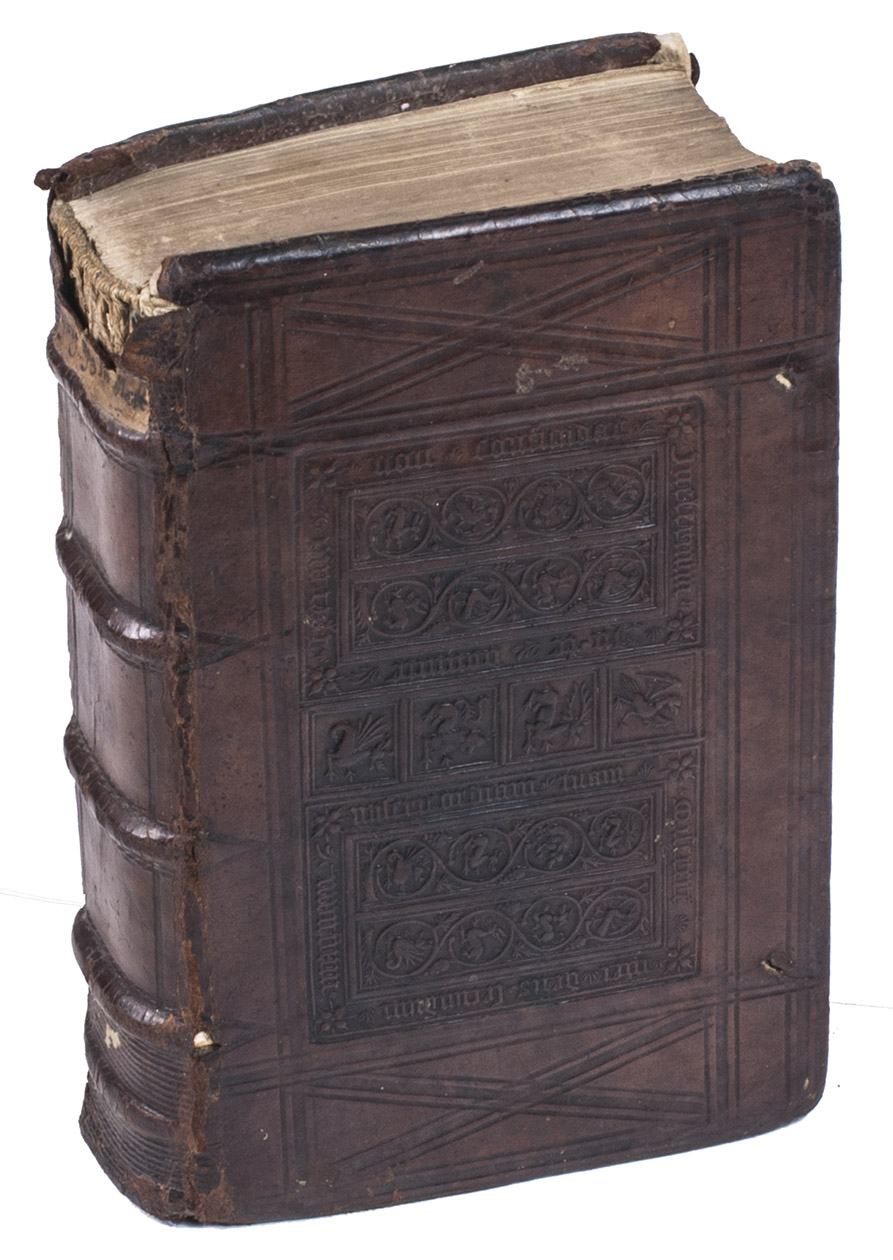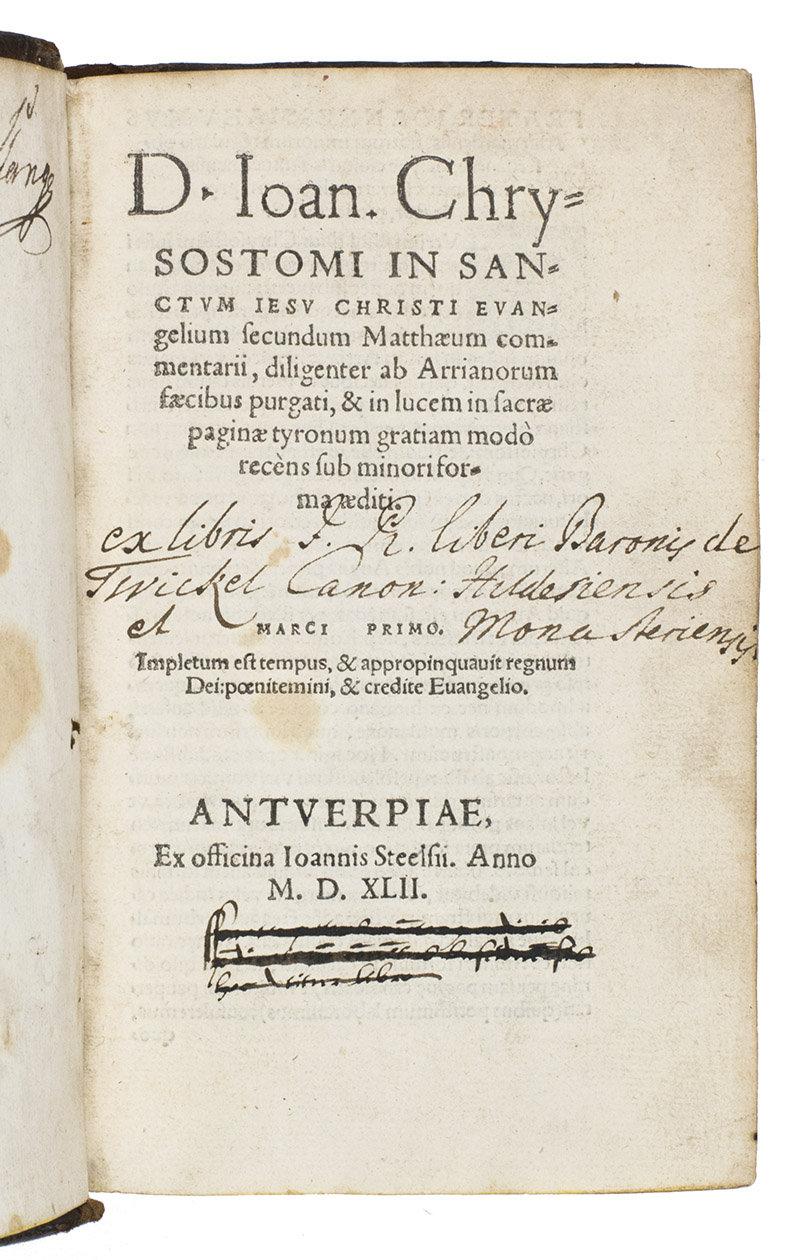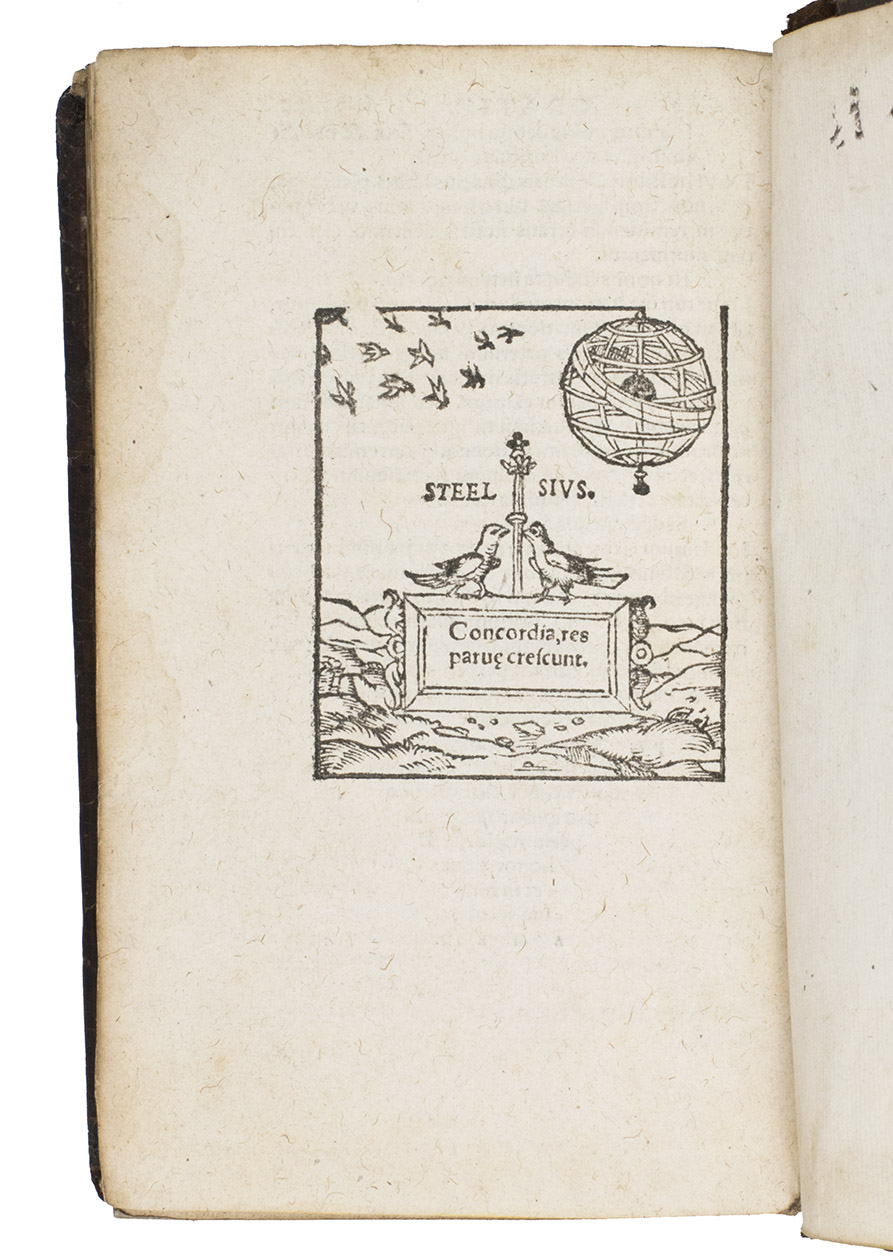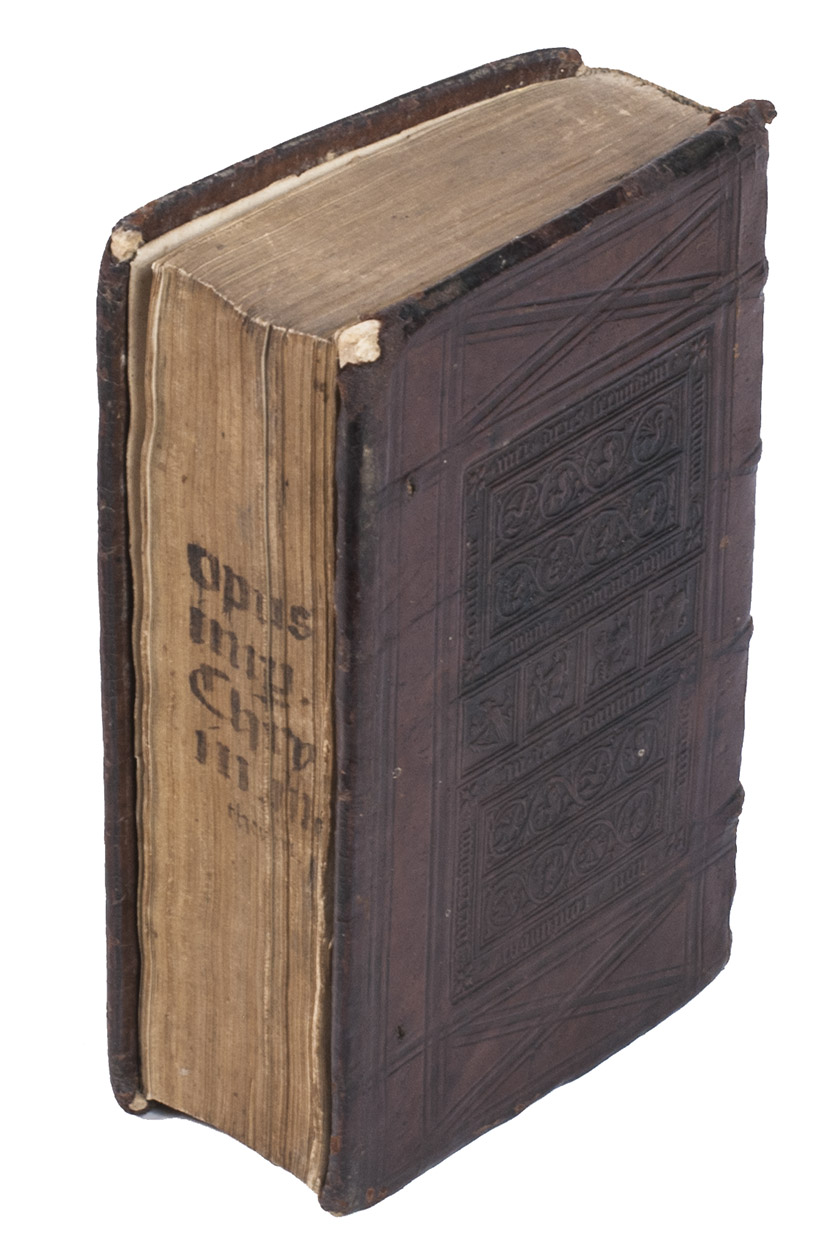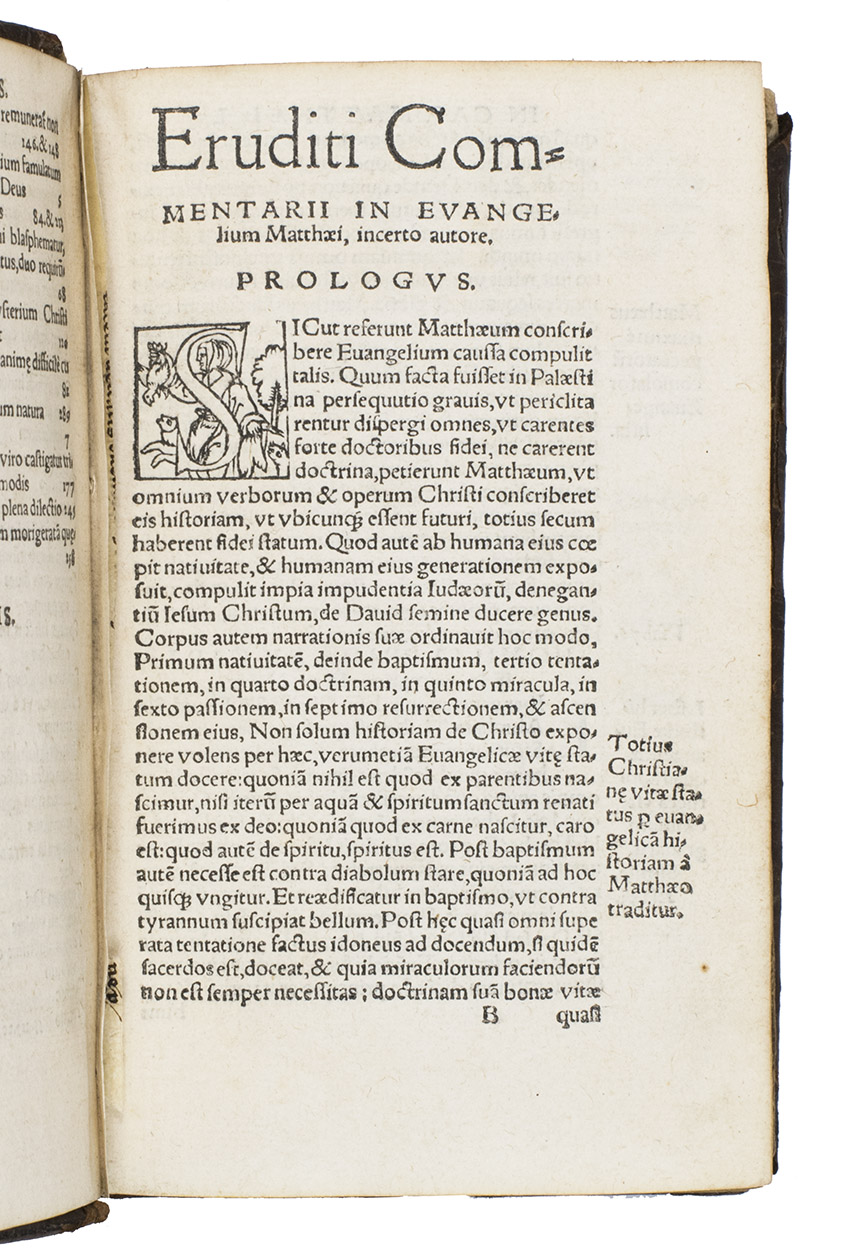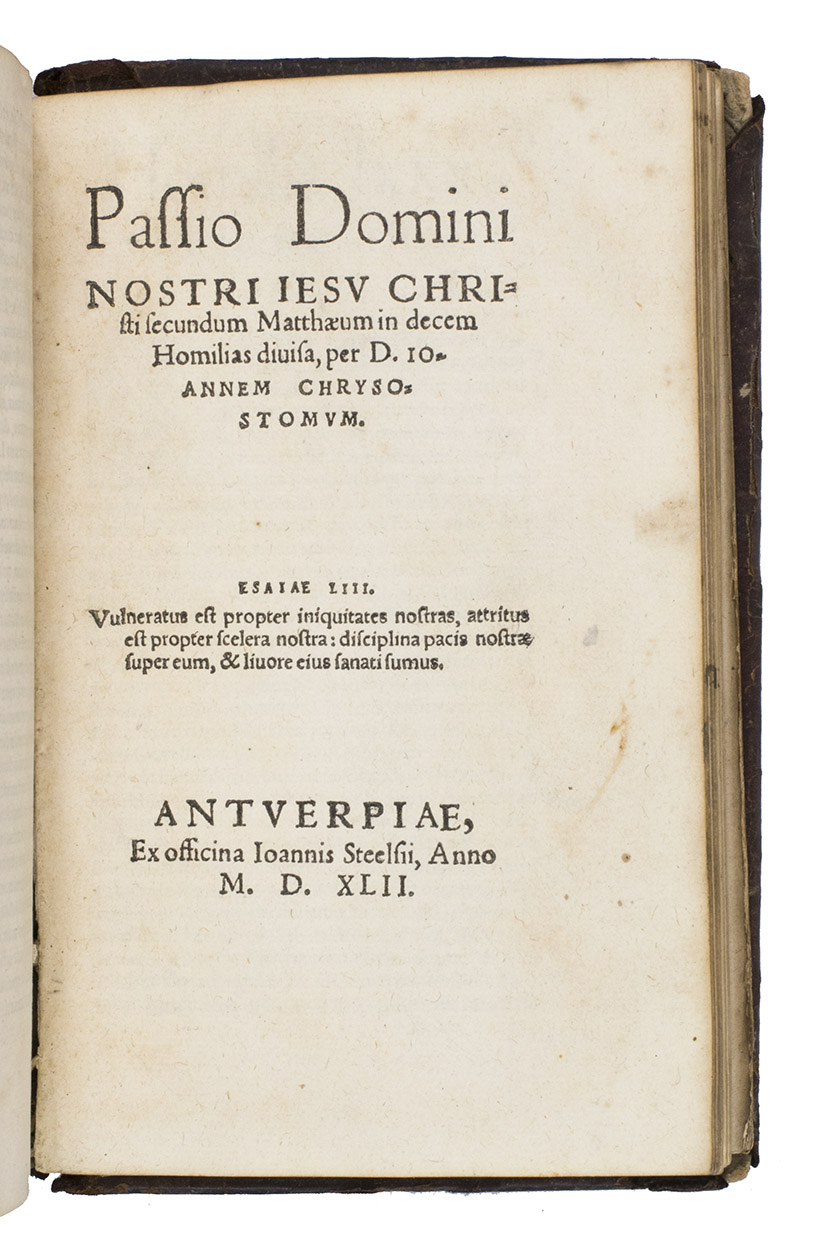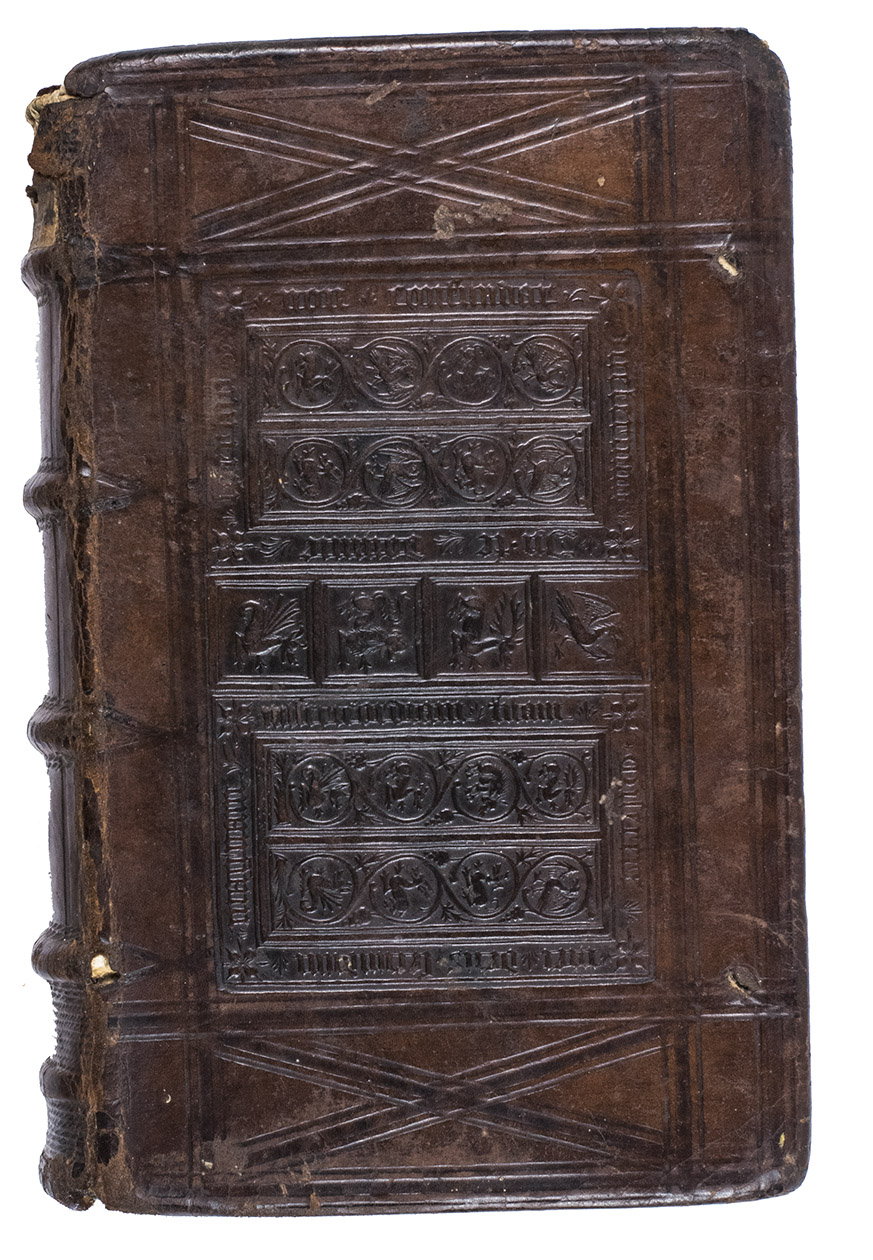CHRYSOSTOM, John.
In sanctum Jesu Christi evangelium secundum Matthaeum commentarii, diligenter ab Arrianorum faecibus purgati, & in lucem in sacrae paginae tyronum gratiam modo recens sub minoriforma aediti.
Antwerp, Joannes Steelsius, 1542.
With: CHRYSOSTOM, John. Passio Domini Nostri Iesu Christi secundum Matthaeum in decem Homilias divisa.
Antwerp, Joannes Steelsius, 1542.
2 works in 1 volume. 8vo. Ad 1: with two woodcut initials at the beginning of the introduction and the prologue, of 2 different series, and a large woodcut printer's device on the last page, showing a staff, surrounded by doves and the text 'steelsius', stuck in a plaquette that says 'concordia, res parue crescunt'. Ad 2: with a woodcut initial on the first leaf. Contemporary Flemish blind-tooled, panel-stamped calf, with a tripartite panel on both sides and remnants of ties. [8],"313" [=314], [1]; 47, [1] ll.
€ 9,500
Rare second edition of a devotional work by Saint John Chrysostom (347-407 CE). The contents of this second edition are more extensive than those of the first edition, published 5 years earlier, which only contains the first two-thirds of the work. The last third was published separately as Passio Domini in 1542 and added to this copy. The present work very rarely appears on the market.
Chrysostom was the archbishop of Constantinople and an important early church father. His name comes from the epithet Chysostomus (anglicized as Chysostom), which means golden-mouth and denotes his eloquence. He was venerated as a saint shortly after his death and is still important in the Eastern Orthodox Church today.
The design of the binding is typically Flemish. Multiple bindings from the same time period with a very similar panel-stamp are known. However, this binding is unique. Not only is it larger, but it also has extra blind-tooling around the edges that the other bindings lack. Most importantly, however, the text on the stamp is different. While all the other bindings are stamped with a line of psalm 130, here it is psalm 70. This variation is not mentioned in any of the reference works.
With a manuscript owner's inscription on the recto of first flyleaf, one on the verso of the first flyleaf and two on the title page (one crossed out). The blind-tooling on the boards is very clear. Some loss of leather, mainly at the head of the spine and the corners of the back board. The pastedowns are missing, showing the boards and the manuscript waste used to reinforce the spine. Small brown stains on the first flyleaf and title page, occasionally slightly browned. Otherwise in good condition. Ad 1: Adams C 1531; Belg. Typ. 1608; STCV 12916258 (3 copies); USTC 408234 (15 copies, only 8 with a known shelfmark); WorldCat 69054696, 312713362, 901134465, 67580012, 69058371 (13 copies); Ad 2: Adams C 1533; Belg. Typ. 6076; STCV 12923552 (1 copy); USTC 408266 (16 copies, only 8 with a known shelfmark); cf. for the author: Baur, Catholic Encyclopedia vol. 8, "St. John Chrysostom"; for the binding: Fogelmark, Flemish and related panel-stamped bindings, pp. 32-44; Goldschmidt, Gothic & Renaissance bookbindings, p. 216 plate 45.
Related Subjects:
